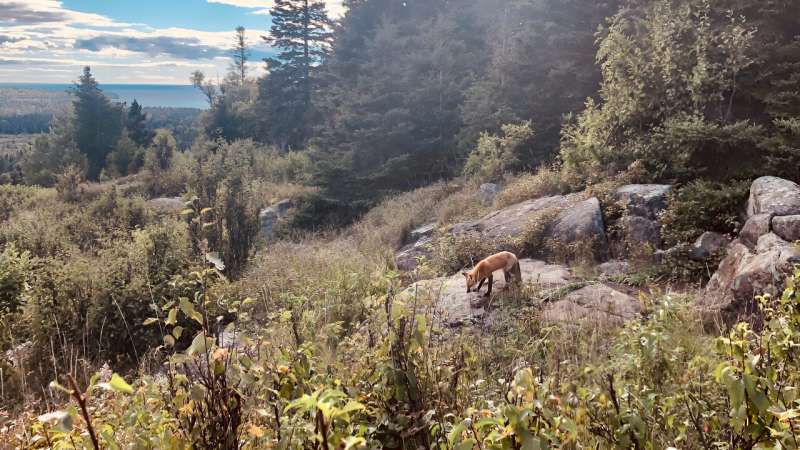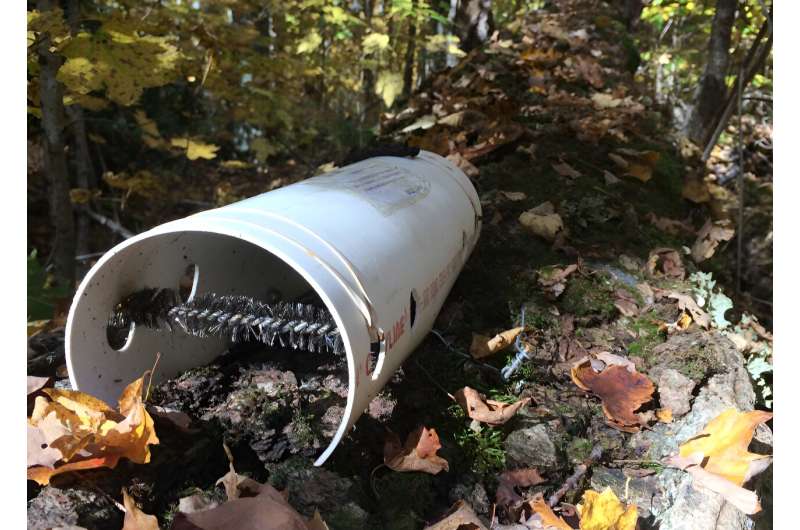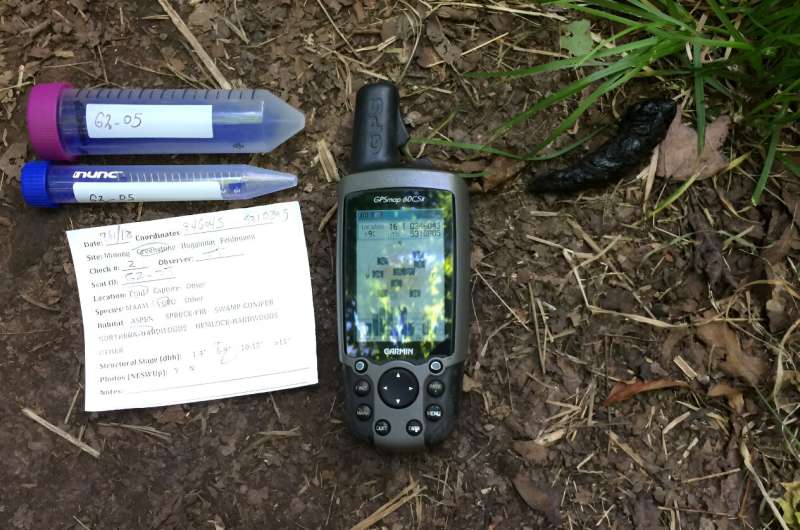This article has been reviewed according to Science X's editorial process and policies. Editors have highlighted the following attributes while ensuring the content's credibility:
fact-checked
peer-reviewed publication
trusted source
proofread
Wolves reintroduced to Isle Royale temporarily affect other carnivores, humans have influence as well

In a rare opportunity to study carnivores before and after wolves were reintroduced to their ranges, researchers from the University of Wisconsin–Madison found that the effects of wolves on Isle Royale have been only temporary. And even in the least-visited national park, humans had a more significant impact on carnivores' lives.
The paper, published recently in Frontiers in Ecology and the Environment, uses DNA from foxes and martens' scat and hair to understand where these animals were and what they ate before wolves were reintroduced, following the first year of their reintroduction, and as they formed packs across the island.
While many studies have been conducted to understand the effects of a carnivore reintroduction on their prey, less well studied is the effect of the reintroduction on other carnivores in the same food web, in this case foxes and martens.
"We had this really amazing opportunity in Isle Royale—where we had data before this large carnivore reintroduction and then following the reintroduction of wolves—where we could look at how these effects within carnivores are taking place, and how they shift," says Mauriel Rodriguez Curras, who completed this work as a graduate student in the lab of UW–Madison forest and wildlife ecology professor Jonathan Pauli.
Isle Royale is a remote island in Lake Superior and its isolated geography and limited variety of animals—including moose, beavers and squirrels—make the island a relatively simple ecosystem in which to study the complexities of carnivore reintroductions.

Wolves first came to Isle Royale in the 1940s, likely by means of an ice bridge that formed naturally across 15 miles of Lake Superior from Minnesota or Canada to the island. Recently, climate change has kept ice bridges from forming as often, meaning new wolves can't cross over to Isle Royale.
While the island once had 50 wolves across several packs, by 2018 there were just two wolves left: a father daughter duo that, due to inbreeding, were also half siblings. With the goal of restoring the natural apex predator to the island and rebalancing the ecosystem, 19 wolves were introduced by the park to Isle Royale in 2019.
For this study, a typical field day involved hiking between 15 and 20 miles of trail to check traps—open PVC tubes with little brushes inside them—for hair samples and looking for scat to swab and collect. Once back at UW–Madison, Rodriguez Curras and Pauli extracted DNA from both the samples and determined which individual fox or marten it was from. By measuring ratios of carbon and nitrogen present in the samples, they could also reconstruct the animals' diets.
From their analysis, Rodriguez Curras and Pauli categorized the effects from wolves on other carnivores into three phases: absence, establishment and coalescence. The absence phase is data the lab had collected on foxes and martens the year before wolves were reintroduced to the island.
During establishment, which included the first year of the wolves' reintroduction, no clear territories or packs had established, and the wolves were wandering the island mostly as individuals. Foxes altered where they hung out on the island in this phase, moving away from the dense forest and closer to campgrounds.

Since foxes compete with martens for food and have been known to kill them, martens normally stick to the densely forested areas of the island where it's easier to hide. But, with foxes shifting to other areas of the island after wolf reintroduction, martens were able to expand their distribution on the island and increase their population.
Meanwhile, foxes found themselves facing greater risk. Foxes hunt small prey, but they often rely on scavenging. Theoretically, scavenging off wolf kills is beneficial to the foxes who couldn't easily kill prey as large as a beaver or a moose calf. But to scavenge off those kills they would also have to be in areas the wolves are regularly, elevating the risk of being killed. So, rather than contend with wolves all the time, foxes supplemented their food by sticking close to campgrounds. They leveraged their cuteness and begging and raiding skills to target an easier meal: food from human visitors.
By 2020, the wolves had coalesced into packs with defined territories. The effects of wolves on the other carnivores disappeared, and foxes and martens occupied areas and ate food similar to the absence phase.
"The rewilding of these species is an important move that conservation biologists are making to try and reweave the fabric of ecosystem function," said Pauli who's been studying the island for 8 years. "But I think the point is that when we do this reweaving of communities, unexpected things happen. I don't think these are bad things, but they're not necessarily things that we'd immediately predict."
Another unexpected consequence was how strongly human visitors to the island could affect these species interactions. Even though Isle Royale is considered one of the most pristine wilderness areas in the country and is one of the least-visited national park, Rodriguez Curras and Pauli found that humans, and the food they bring with them, have a significant effect on the relationship between the carnivores, where they live, what they eat and how they then interact.
Rodriguez Curras and Pauli credit their partnership with the National Park Service for providing the opportunity to conduct research that can guide ongoing and future carnivore reintroduction efforts in other areas. Their work revealing the way species interact with one another and with humans also provides Isle Royale National Park with the best available science to potentially improve visitors' experiences while preserving the island's wilderness.
More information: Mauriel Rodriguez Curras et al, The pulsed effects of reintroducing wolves on the carnivore community of Isle Royale, Frontiers in Ecology and the Environment (2024). DOI: 10.1002/fee.2750
Journal information: Frontiers in Ecology and the Environment
Provided by University of Wisconsin-Madison




















